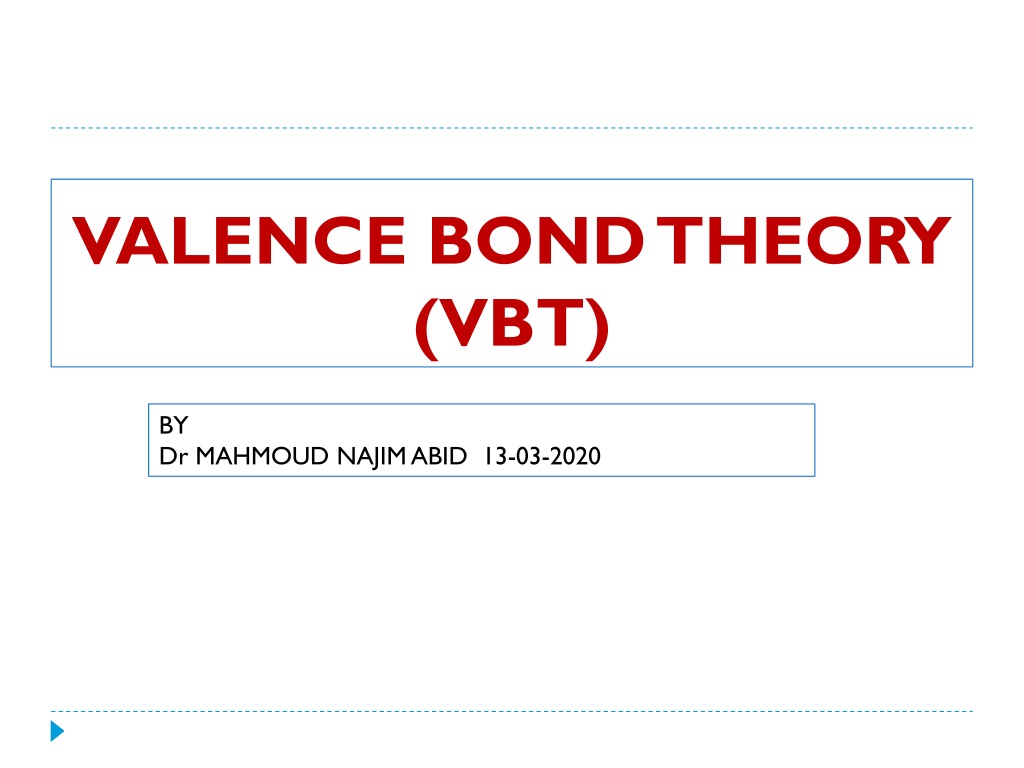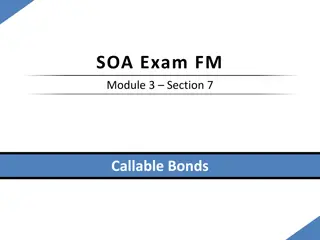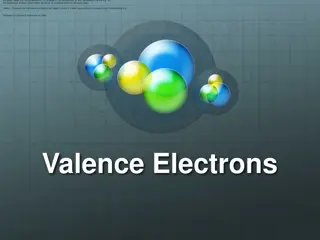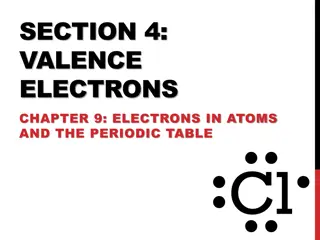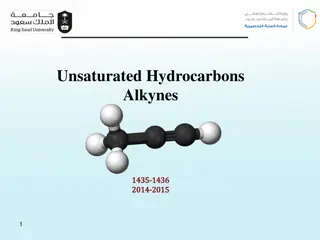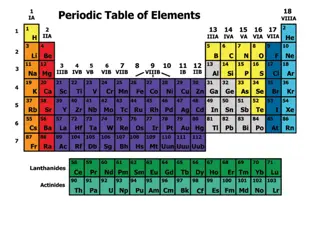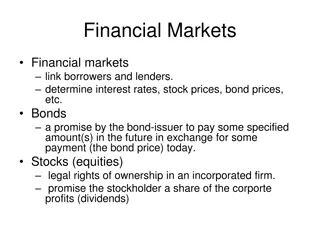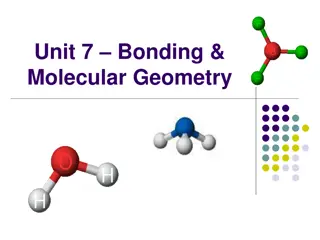Understanding Valence Bond Theory in Chemistry
Valence Bond Theory (VBT) explains the formation of covalent bonds through overlapping of valence orbitals, introducing Sigma and Pi bonds. This theory is essential to understand the geometry and stability of complex molecules.
Download Presentation

Please find below an Image/Link to download the presentation.
The content on the website is provided AS IS for your information and personal use only. It may not be sold, licensed, or shared on other websites without obtaining consent from the author. Download presentation by click this link. If you encounter any issues during the download, it is possible that the publisher has removed the file from their server.
E N D
Presentation Transcript
VALENCE BOND THEORY (VBT) BY Dr MAHMOUD NAJIM ABID 13-03-2020
Introduction The valence bond theory was proposed by Heitler and London to explain the formation of covalent bond quantitatively using quantum mechanics. Later on, Linus Pauling improved this theory by introducing the concept of hybridization. The VSEPR model based largely on Lewis structures provides relatively simple and straight forward methods for predicting the geometry of molecules. But the Lewis theory of chemical bonding does not clearly explain why chemical bonds exist. For a more complete explanation for chemical bond formation we look to quantum Mechanics. In fact, the quantum mechanical studies of chemical bond also provide a means for understanding molecular geometry. At present Valence Bond Theory is one of the two quantum mechanical theories used to describe covalent bond formation and the electronic structure of molecules.
Objectives The specific objectives of this assignment are: To explain the postulates and limitations of the Valence Bond Theory To explain the formation of Sigma and Pi bonds To use The Valence Bond Theory to determine the geometry of complex compounds/ions
Postulates the Valence Bond Theory (VBT) This theory assumes that: The overlapping of two half-filled valence orbitals of two different atoms results in the formation of the covalent bond. The overlapping causes the electron density between two bonded atoms to increase. This gives the property of stability to the molecule, greater the extent of overlapping, stronger is the bond formed. In case the atomic orbitals possess more than one unpaired electron, more than one bond can be formed and electrons paired in the valence shell cannot take part in such a bond formation. The direction of the covalent bond is along the region of overlapping of the atomic orbitals, i.e. a covalent bond is directional. Based on the pattern of overlapping, there are two types of covalent bonds: sigma bond ( -bond) and a pi bond ( -bond).
Formation of -bond (Sigma bond) and -bond (Pi bond) Formation of -bond Illustration A sigma bond (symbol: ) is a covalent bond formed via the linear overlap of two orbitals (head to head overlapping) i.e. the -bond is formed overlapping of atomic orbitals along the inter nucleus axis. It is a stronger bond and cylindrically symmetrical. Depending on the types of orbital's overlapping, the -bond is divided into the following types: s-s bond, p-p bond, and s-p bond. due to
Formation of -bond (Sigma bond) and -bond (Pi bond) Formation of -bond Illustration A pi bond (symbol: ) is a covalent bond formed via parallel overlap of two orbitals (side overlapping). In this bond, the electron present above and below the inter-nuclear relatively a weaker bond since the electrons are not strongly attracted by the nuclei of bonding atoms. to side density is axis. It is
Postulates of the Valence Bond Theory in coordinated Complex Compounds/ions This theory assumes that: The central metal atom or ion makes available a number of empty s, p, and d atomic orbitals equal to its coordination number. These vacant orbitals hybridize together to form hybrid orbitals which are the same in number as the atomic orbitals hybridizing together. These hybrid orbitals are vacant, equivalent in energy, and have different geometry. The ligands have at least one -orbital containing a lone pair of electrons Vacant hybrid orbitals of the metal atoms or ions overlap with the filled sigma orbitals of the ligands to form ligand metal -orbital. The non-bonding electrons of the metal atoms or ions are then rearranged in the metal orbitals which do not participate in forming the hybrid orbitals. The rearrangement of non-bonding electrons takes place according to Hund s rule.
Important types of hybridization found in the first row transition metal complexes and the geometry of the complexes Coordination number of the central metal atom/ion Type of hybridization undergone by the central metal atom/ion Geometry of the complex Examples of complexes , ?? ??? ? + 2 sp(4s, 4px) Linear or ????? diagonal Trigonal planar ??+(? = ?(??))? +, 3 ???(??,???,???) or equilateral ??+?(??)? ? (distorted triangle trigonal planar) etc. 4 Square planar ? , ????? ? ??(??)? ????(???? ??,??,???,???) 4 Square planar ?+ , ?? ??? ? ????(??,???,???,???? ??) ?+ ?? ??? ?? ????? 4 Tetrahedral ? , ? , ???(??,???,???,???) ??(??)? ??(??)?etc.
Important types of hybridization found in the first row transition metal complexes and the geometry of the complexes cont.. Coordination number of the central metal atom/ion Type of hybridization undergone by the central metal atom/ion Geometry of the complex Examples of complexes 5 ????(????,??,???,???,??Trigonal bipyramidal ? ??(??)?, ????? ? ???+(??????)??? ????(???? ??,??,???,???Square pyramidal 5 ?, ???+(??????)?? ? ??(??)? ?????(???? ??,????,??,??Inner-orbital octahedral 6 ?+, ??(???)? ? ,etc. ??(??)? ?????( ??,???,???,?????Outer-orbital 6 ??+??+ ?+ ???? octahedral ? ,etc. ????
Geometry of 6-coordinate complex ions Generally the geometry of 6-coordinated complexes compounds/ions is octahedral, as indicated in the table 1, there are two possible hybridizations responsible for this type of geometry: d2sp3 whose hybridized are called inner-orbital octahedral complexes and sp3d2 whose hybridized are called outer-orbital octahedral complexes.
????? Hybridization in Inner-orbital Octahedral Complexes This type of hybridization takes place in those octahedral complexes which contain strong ligands. On the basis of the orientation of the lobes of d-orbitals in space, these orbitals have been classified into two sets: ??? and ??, ??? set consist of ???,???and ???orbitalswhile ??set consist of ??? ?? and ??? orbitals. In the formation of six d2sp3hybrid orbitals, two (n-1)d-orbitals of ??set, one ns and three np( ???,??? ??? ???) orbitals combine together and form six d2sp3 hybrid orbitals.
Example: ????? Hybridization of Hexacyanoferrate (III) ion, ??(??)? ? The magnetic study of this ion has shown that this ion has one unpaired electron (n = 1) and hence paramagnetic
????? Hybridization in Outer-orbital Octahedral Complexes This type of hybridization takes place in those octahedral complexes which contain weak ligands. Weak ligands are those which cannot force the electron of ??? ?? and ??? ( ??set) of inner shell to occupy ???,???and ???orbitals (??? set) of the same shell.Thus in this hybridization (n- 1) ??2 and (n-1) ??2 ?2are not available for hybridization.
Example: ????? Hybridization of Hexafluoroferrate (III) ion, ???? ? The magnetic studies of this ion has shown that this ion has five unpaired electrons (n = 5)
Geometry of 4-coordinated complex ions The compounds/ions may be either square planar or tetrahedral, depending on whether the central atom/ion is ???2, ??2? ?? ??3 hybridized. What type of hybridization (i.e. ???2, ??2? ?? ??3) the central metal atom/ion of a 4-coordinated complex undergo depends on the number of unpaired or paired electrons present in the complex ion and this is revealed by the magnetic studies. geometry of 4-coordinated complexes
???? Hybridization in square planar complexes Example: Is tetracyanonickelate (II) ion, hybrididized? Magnetic studies of this ion shown that ??(??)? unpaired electron (n = 0) and hence diamagnetic. ? , ????or ??? ? ion has no ??(??)? ? ion has a When ??(??)? square planar geometry. ? ion has When ??(??)? tetrahedral geometry ? ion has no Conclusion: we have said above that experiments have shown that ??(??)? unpaired electron (n = 0) and hence diamagnetic. This magnetic property confirms the fact that ??(??)? ? ion has square planar geometry with (n = 0) and not tetrahedral geometry n = 2.
??? Hybridization in tetrahedral Complexes ? Example: sp3 Hybridization in Tetrachloronickelate (II) ion, ????? Magnetic measurements reveal that unpaired electron (n=2). This is possible only when this ion is formed by sp3 hybridization and has a tetrahedral 2 ion is paramagnetic and has two NiCl4
Limitations of the Valence Bond Theory There are many limitations of VBT theory hereunder are some of them Valence bond theory (VBT) cannot account for the relative stabilities for the different shapes and different coordination numbers in metal complexes e.g. it cannot explain satisfactorily as to why Co(+2) ( d8 system ) rarely forms tetrahedral complexes . This theory cannot account for the relative rates of reactions of the analogous metal complexes. instantaneously in acidic aqueous solution while [Fe(phen)3]+2 dissociates at a slow rate . The classification of metal complexes on the basis of their magnetic behavior into a covalent (inner-orbital) and ionic (outer-orbital) complexes is not satisfactory and is often misleading. VBT cannot interpret the spectra (color) of the complexes. This theory does not predict the magnetic behaviors of complexes. This theory only predicts the number of unpaired electrons. e.g. [Mn(phen)3]2+ dissociates
